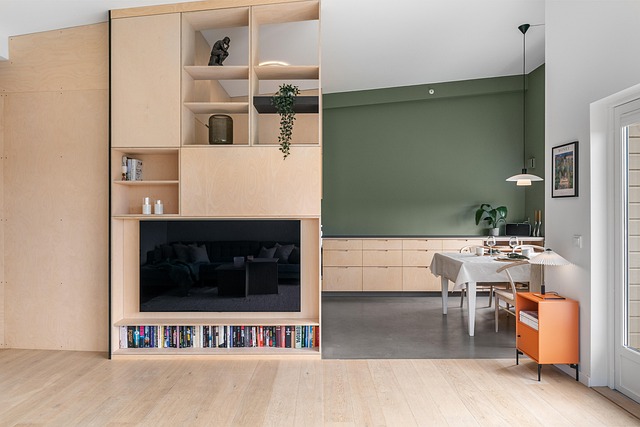Choosing waterproof kitchen flooring, such as vinyl (including LVT), ceramic tile, or rubber, is essential for preventing water damage and easy cleaning in humid environments around sinks, dishwashers, and stoves. These materials offer durability, low maintenance, and protection against moisture and heat. Luxury vinyl tiles are particularly popular due to their waterproof nature, ability to mimic natural materials, and scratch/stain resistance, making them ideal for high-moisture spaces. Regular inspection and proper maintenance, including sealing natural stones post-installation and avoiding harsh chemicals, ensure the longevity of your waterproof kitchen flooring.
Looking to transform your kitchen with expert advice on flooring? Discover the ultimate guide to waterproof kitchen flooring, covering benefits, materials, styles, installation, and maintenance. Learn how to choose the perfect surface that not only boosts aesthetics but also offers durability and water resistance. From tile to vinyl, explore popular options and gain insights to make an informed decision for your dream kitchen.
- Understanding Waterproof Kitchen Flooring: Benefits and Basics
- Popular Materials for Waterproof Kitchen Floors
- Stylish Options and Design Considerations
- Installation Tips and Maintenance Guidelines
Understanding Waterproof Kitchen Flooring: Benefits and Basics
In the humid, potentially spill-prone environment of a kitchen, choosing the right flooring is paramount. This is where waterproof kitchen flooring emerges as a smart option. Beyond preventing water damage and easy cleaning, this type of flooring offers enhanced durability and low maintenance. It’s particularly ideal for areas around sinks, dishwashers, and stoves, where moisture and heat can wreak havoc on traditional floors.
Waterproof kitchen flooring comes in various materials like vinyl, luxury vinyl tiles (LVT), and ceramic tile. Vinyl, known for its affordability and comfort underfoot, is a popular choice. LVT offers greater durability and realism in design, while ceramic tile adds a touch of elegance with its variety of colors, textures, and patterns. Regardless of the material, waterproof flooring provides a protective barrier against water penetration, ensuring your kitchen remains not just clean but also safe from structural damage.
Popular Materials for Waterproof Kitchen Floors
When it comes to choosing a suitable flooring material for your kitchen, especially in areas prone to moisture and water splashes, selecting a waterproof option is crucial. Vinyl flooring has emerged as a top choice among homeowners due to its durability and water-resistant properties. Luxury vinyl tiles or planks are designed to withstand high humidity and can mimic the look of wood, stone, or ceramic tile with remarkable realism. This versatility makes them an excellent fit for any kitchen design aesthetic.
Additionally, certain types of rubber flooring offer superior waterproof capabilities and comfort underfoot. These floors are not only effective at repelling water but also provide a soft surface that reduces fatigue during long periods spent in the kitchen. With their seamless installation and low maintenance requirements, waterproof kitchen flooring options ensure a practical and stylish upgrade for any space.
Stylish Options and Design Considerations
When it comes to stylish options for your kitchen flooring, the choices are vast and varied. Beyond functionality, your floor can become a design focal point that elevates the overall aesthetic of your space. Consider luxury vinyl tiles (LVT) for their waterproof kitchen flooring properties, versatility in mimicking natural materials like wood or stone, and durability against scratches and stains. This makes LVT a popular choice not just for kitchens but as a stylish option for high-moisture areas.
Design considerations should also include the overall color scheme and theme of your kitchen. Neutral floors like grey or beige offer a clean canvas that complements various styles, while bolder colors can add vibrancy to a space. Textured flooring introduces depth and visual interest, but be mindful of maintenance requirements. Ensure whatever material you choose aligns with your lifestyle and is easy to keep clean, especially considering the high traffic and spills common in kitchens. Waterproof kitchen flooring options are particularly advantageous for maintaining a tidy and safe environment.
Installation Tips and Maintenance Guidelines
When installing kitchen flooring, especially in areas prone to moisture, consider materials with waterproof features for added protection. Vinyl and luxury vinyl tiles (LVT) are excellent choices as they offer a wide range of designs imitating wood or stone while being highly resistant to water damage. Ensure proper fitting to prevent any gaps where water could seep in. For natural stones like marble or granite, use professional sealing products post-installation to create a waterproof barrier.
Regular maintenance is crucial for prolonging the life of your kitchen flooring. For non-waterproof materials, frequent mopping and cleaning are essential to remove spills promptly. Avoid using harsh chemicals or abrasive cleaners that can damage finishes. In case of waterproof floors, regular inspection for any signs of damage or warping is still recommended. Minor issues can often be repaired easily, preventing the need for extensive replacements.
When selecting a waterproof kitchen floor, consider both functionality and aesthetics. Understanding the benefits of waterproof materials and exploring popular options like vinyl or ceramic tile will ensure your kitchen stays stylish and durable for years. Incorporate design elements that complement your space, from neutral tones to bold patterns. With proper installation and maintenance, you’ll enjoy a safe, dry, and visually appealing cooking environment.
